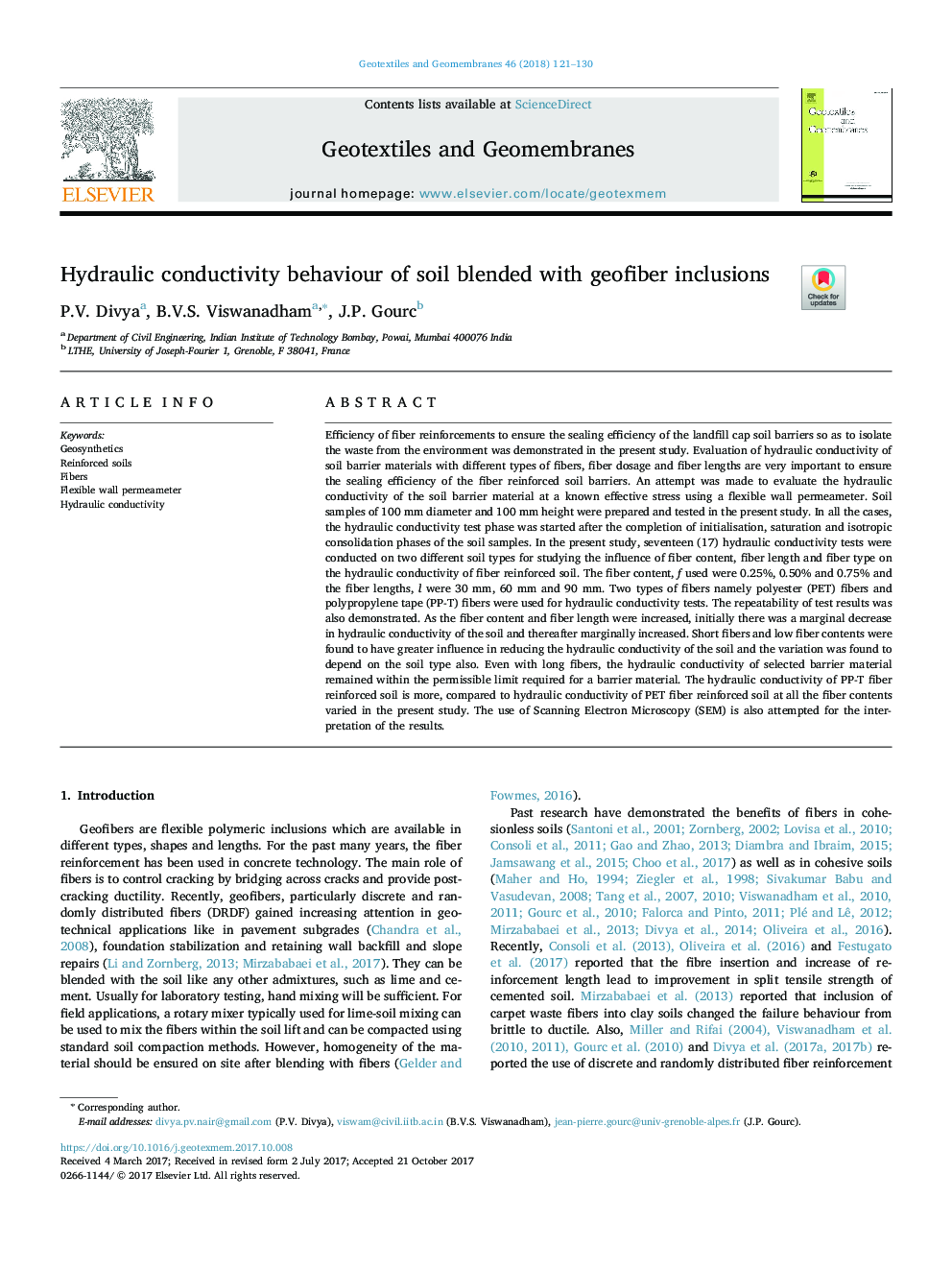| Article ID | Journal | Published Year | Pages | File Type |
|---|---|---|---|---|
| 6746971 | Geotextiles and Geomembranes | 2018 | 10 Pages |
Abstract
Efficiency of fiber reinforcements to ensure the sealing efficiency of the landfill cap soil barriers so as to isolate the waste from the environment was demonstrated in the present study. Evaluation of hydraulic conductivity of soil barrier materials with different types of fibers, fiber dosage and fiber lengths are very important to ensure the sealing efficiency of the fiber reinforced soil barriers. An attempt was made to evaluate the hydraulic conductivity of the soil barrier material at a known effective stress using a flexible wall permeameter. Soil samples of 100Â mm diameter and 100Â mm height were prepared and tested in the present study. In all the cases, the hydraulic conductivity test phase was started after the completion of initialisation, saturation and isotropic consolidation phases of the soil samples. In the present study, seventeen (17) hydraulic conductivity tests were conducted on two different soil types for studying the influence of fiber content, fiber length and fiber type on the hydraulic conductivity of fiber reinforced soil. The fiber content, f used were 0.25%, 0.50% and 0.75% and the fiber lengths, l were 30Â mm, 60Â mm and 90Â mm. Two types of fibers namely polyester (PET) fibers and polypropylene tape (PP-T) fibers were used for hydraulic conductivity tests. The repeatability of test results was also demonstrated. As the fiber content and fiber length were increased, initially there was a marginal decrease in hydraulic conductivity of the soil and thereafter marginally increased. Short fibers and low fiber contents were found to have greater influence in reducing the hydraulic conductivity of the soil and the variation was found to depend on the soil type also. Even with long fibers, the hydraulic conductivity of selected barrier material remained within the permissible limit required for a barrier material. The hydraulic conductivity of PP-T fiber reinforced soil is more, compared to hydraulic conductivity of PET fiber reinforced soil at all the fiber contents varied in the present study. The use of Scanning Electron Microscopy (SEM) is also attempted for the interpretation of the results.
Related Topics
Physical Sciences and Engineering
Earth and Planetary Sciences
Geotechnical Engineering and Engineering Geology
Authors
P.V. Divya, B.V.S. Viswanadham, J.P. Gourc,
